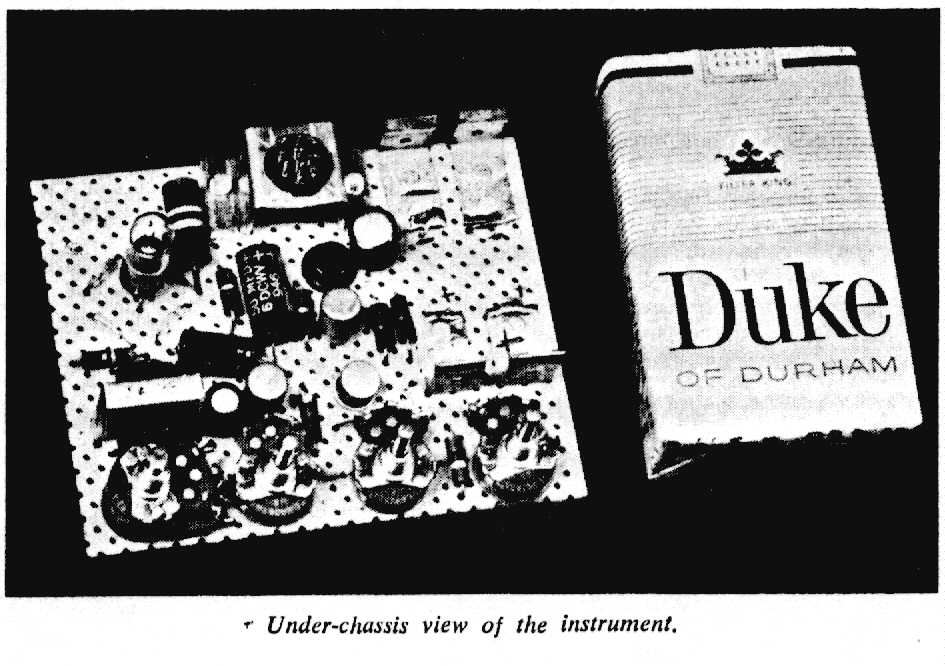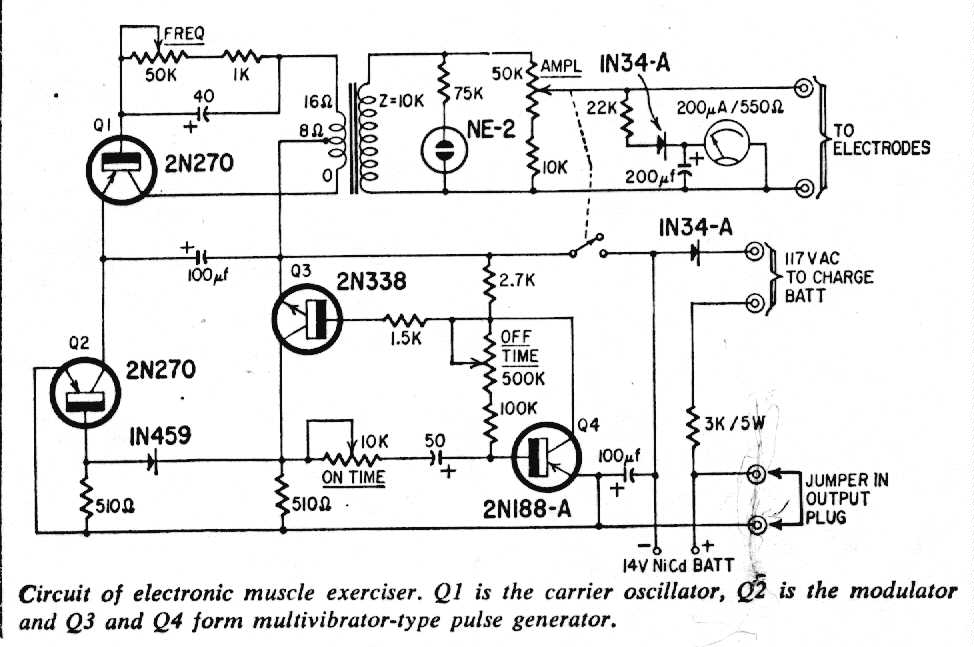ELECTRONIC MUSCLE EXERCISER
EARLY ELECTRICAL EXPERIMENTERS discovered that an electric shock applied
to a section of the body causes muscles to contract in that area. Today,
some doctors and physiotherapists prescribe controlled low-voltage
electric impulses in treating certain muscular disorders, maintaining or
restoring muscle tone and for exercising muscles in local areas. Many of
the machines in use today are in large office type consoles.
Micro Precision Corp. of Brooklyn, N. Y., has devised a miniature portable
electronic muscle exerciser that it expects to market within the near future.
The unit uses transistors and measures 3 x 4 x 1 inch – about the size
of two packs of cigarettes. The instrument (see schematic) uses a
14-volt NiCad battery and has a built-in trickle charger.
The output wave is a carrier whose frequency is variable from 20 to
4,000 cycles. It is modulated by pulses with both on and off times adjustable
from 0.1 to 7 seconds. The output across 1,000 ohms – the average body
resistance between the applicator electrodes – is 15 volts.
END
*** Important Safety Note: The original circuit was directly charged
from 117 Volts, with a safety jumper in the output lead. If built,
the unit should be charged via an 18 volt plug pack and it should never
be charged while being used. Don’t charge direct from the AC line
as shown!
Note: The battery comprised 2 x 6 cell nicad packs in series.
A substitute could be 2 x ‘9v’ nicads in series, or alkalines could be
used without a charger.


